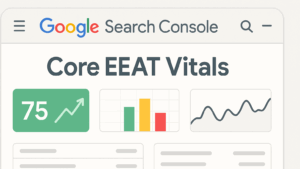 The most common advice is always the worst advice: Either everyone else is doing it or its so vague it can’t make any difference. If the best advice you’ve read is to “create good content” then you’re probably feeling a bit frustrated. So were we – that’s why we wrote this.
The most common advice is always the worst advice: Either everyone else is doing it or its so vague it can’t make any difference. If the best advice you’ve read is to “create good content” then you’re probably feeling a bit frustrated. So were we – that’s why we wrote this.
Table of Contents
ToggleA B2B YouTube Strategy
For the B2B Tech user, living in a digital landscape, video marketing has emerged as a powerful tool for assessing business solutions across all industries. YouTube, with its loyal and addictive users, it’s an ideal platform for B2B marketing campaigns.
Here are the top 5 YouTube B2B marketing best practices:
Don’t try to be entertaining
Be interesting but be accurate and informative. It sounds counter-intuitive but it’s not – understand why the user is watching you and what they expect to get. Users don’t get to your video by chance or randomly, they’re there for a specific reason and it’s likely they’re there to solve a problem: so help them get to it. Even if the video is just a segway from a search to a video to a more detailed page or whitepaper.
Optimize Videos for Search Visibility in Google AND YouTube
YouTube is the second biggest search engine after Google and it works JUST LIKE Google Organic search. So it’s technical and it needs authority and context. But you can also use your regular desktop SEO to boost your YouTube views and it counts organically.
Promote Videos Across Your Channels
If you’re building a YouTube channel with SEO, consider sharing and embedding your YouTube video on Linkedin, Twitter, and Facebook instead of just natively uploading to each – that will get you views and grow your visibility.
Engage with Viewers and Build Your YouTube community
Create meaningful connections with your viewers by actively engaging with them. Respond to comments, answer questions, and participate in discussions and do so in a timely manner but without rushing as this can be seen as aggressive, defensive or combative in some scenarios. This interaction demonstrates your commitment to your audience and builds a sense of community around your brand. Encourage viewers to share their thoughts, experiences, and feedback, creating a two-way dialogue that strengthens brand affinity.
Track and Analyze Video Performance
Use YouTube’s powerful built-in Analytics to gain valuable insights into your video performance. Track key metrics such as views, engagement rates, and conversions. Analyze these metrics to understand what’s working well and identify areas for improvement. This data-driven approach allows you to refine your strategy, optimize your content, and maximize the effectiveness of your YouTube marketing efforts.
YouTube Best Practices for Uploading
Here are my top tipcs for the best settings when uploading a video:
- Use tags
- Make sure your title is in the description
- Link to other videos
- Set up Chapters
- SEt to not Made for Kids
- Set the CC Options correctly – most people ignore this
- Set the video AND description languages – usually, you have to do this after uploading!
- Either use hashtags OR locations
- If you set a location, it wont incorporate Hashtags
Best Practices for YouTube Marketing with Shorts
- The video must be 9:16
- The video must be < 60 seconds
- The video should be 720 or higher
- Experiment with hashtags
YouTube is great for B2B Marketing
YouTube is both a platform and a channel. You can generate views from within YouTube, through ads, via your website, email, social and from Google Search.
By implementing these best practices, B2B businesses can harness the power of YouTube to achieve their marketing goals.






